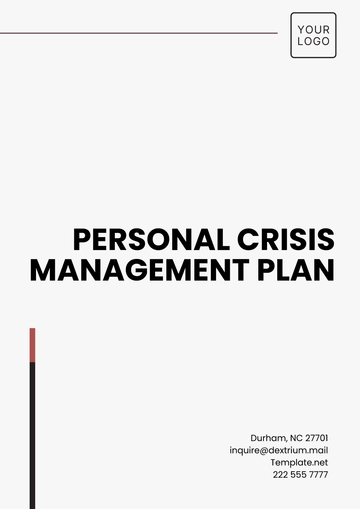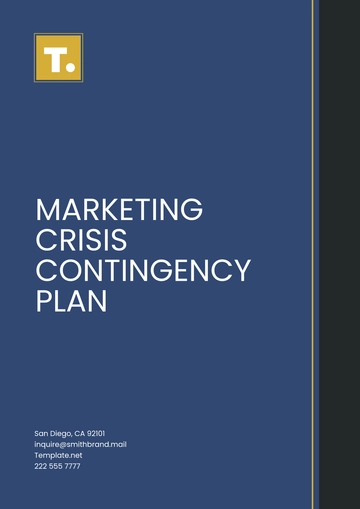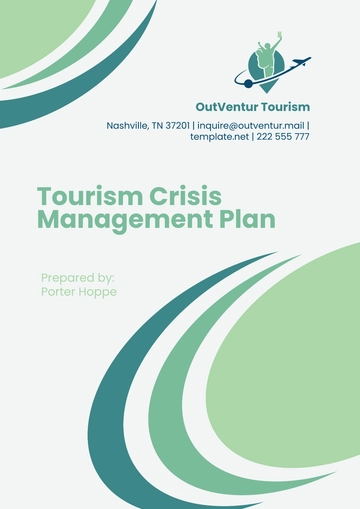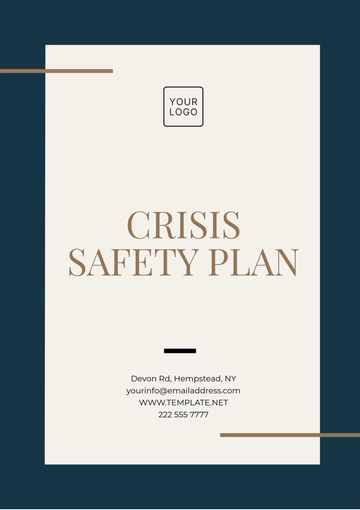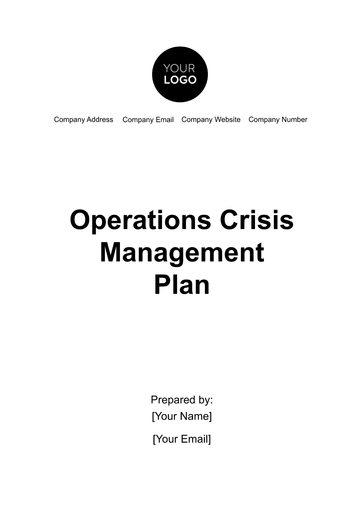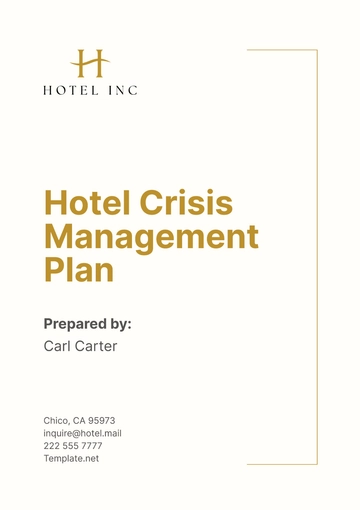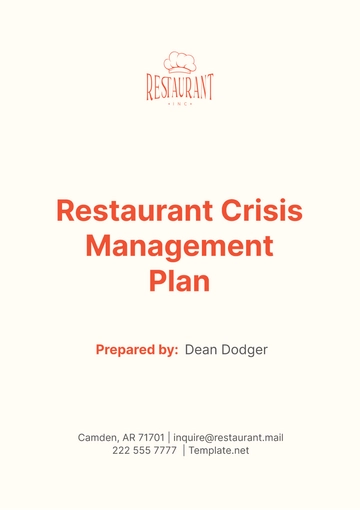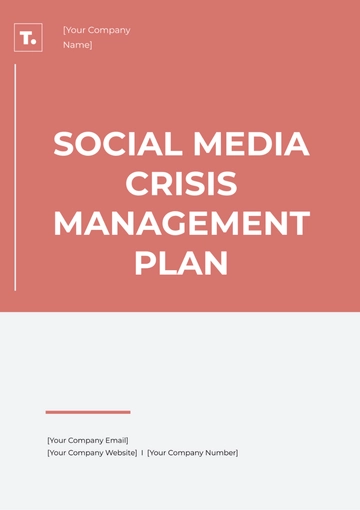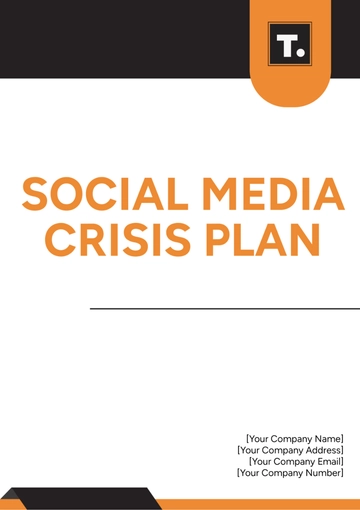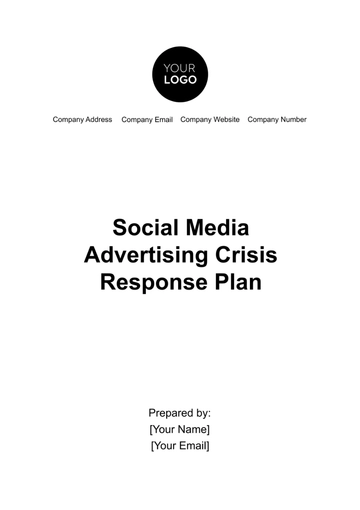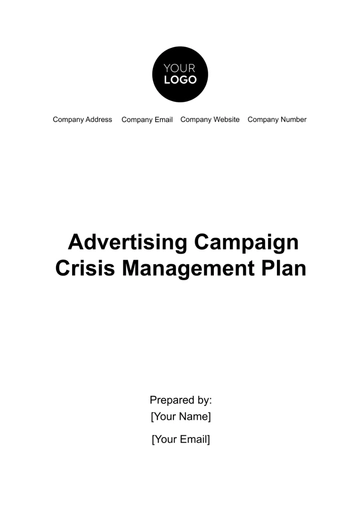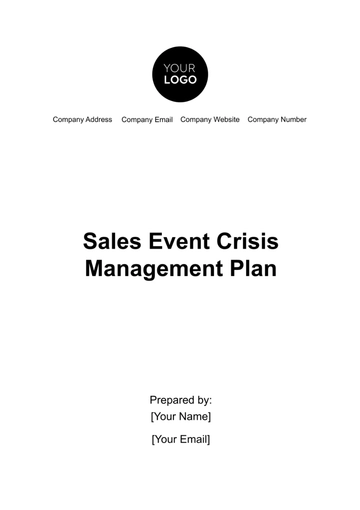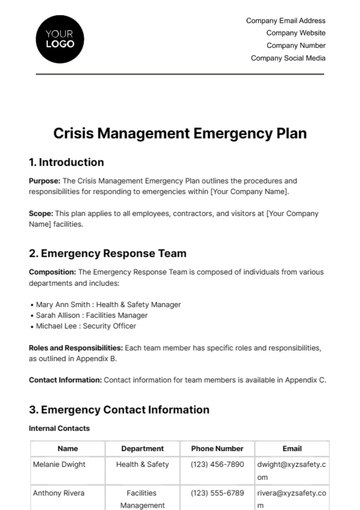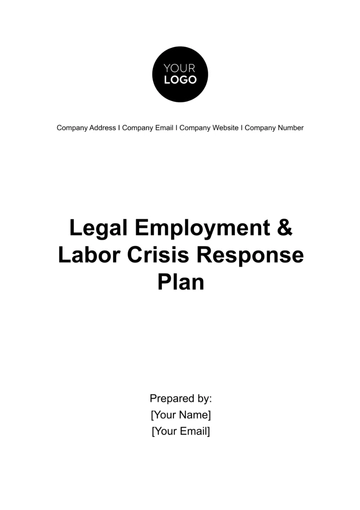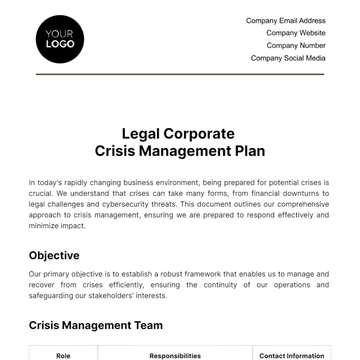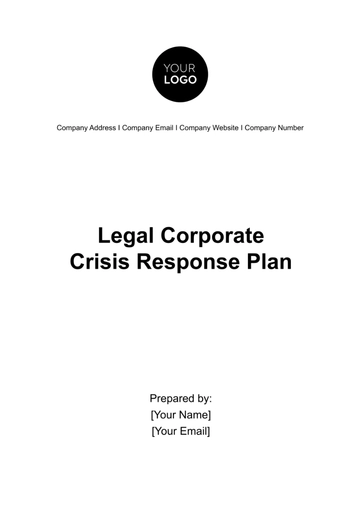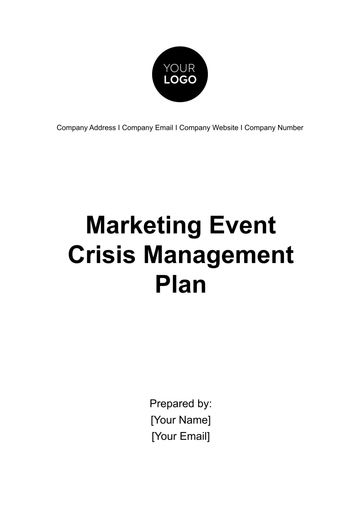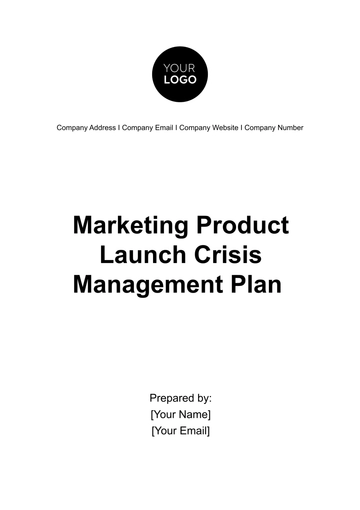Free Social Media Advertising Crisis Response Plan
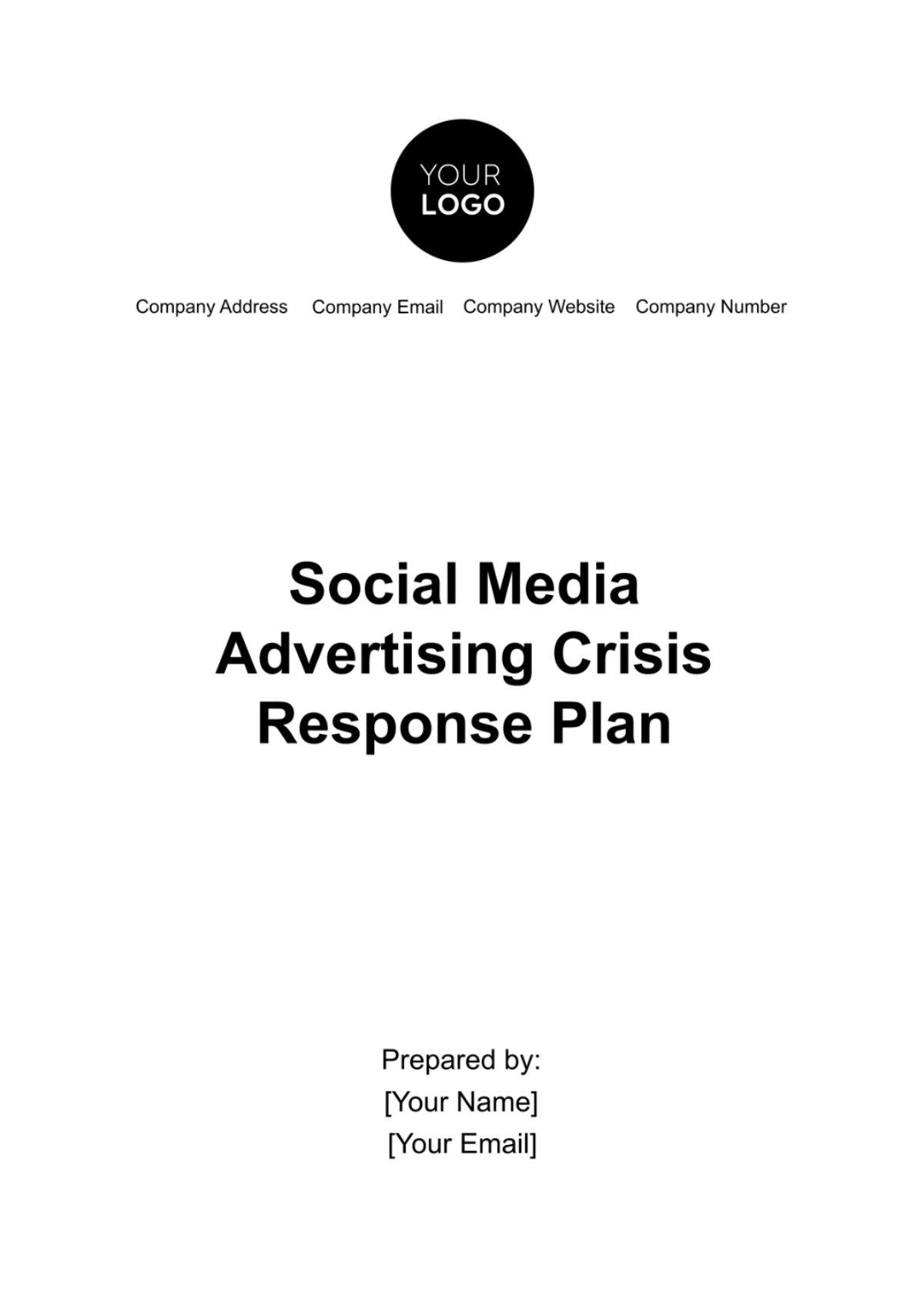
Response Plan
Introduction
A. Purpose
The primary purpose of this Social Media Advertising Crisis Response Plan is to establish a structured and proactive approach to address and mitigate any social media advertising crises that may arise within the scope of [Your Company Name]. By having a well-defined plan in place, we aim to minimize the impact of such crises on our brand's reputation, financial stability, and relationships with stakeholders.
B. Scope
This plan applies comprehensively to all social media advertising campaigns managed and executed by [Your Company Name]. It covers a wide range of potential crises, including but not limited to, misinformation, negative publicity, legal issues, data breaches, and any other incidents that have the potential to adversely affect our brand's image and reputation. Furthermore, this plan extends to crises that may involve third-party collaborations, such as those with [Your Partner Company Name], ensuring a coordinated response in such situations.
C. Objectives
Our objectives for implementing this Crisis Response Plan are as follows:
Minimize Reputation Damage: To minimize the damage to our brand's reputation during a crisis by responding swiftly, effectively, and transparently to mitigate negative publicity.
Effective Communication: To ensure that communication with all stakeholders - customers, partners, employees, and the public - is clear, honest, and consistent throughout the crisis response process.
Legal Compliance: To comply with all relevant legal and regulatory requirements while taking necessary legal actions to protect the interests of [Your Company Name].
Continuous Improvement: To foster a culture of continuous improvement by evaluating each crisis response, identifying lessons learned, and updating the Crisis Response Plan accordingly to enhance preparedness for future incidents.
Roles and Responsibilities
A. Crisis Response Team
The Crisis Response Team is a crucial component of our crisis management efforts. The team is composed of individuals who are responsible for guiding the response to a crisis. Their roles are as follows:
[Your Name] (Team Leader): As the team leader, [Your Name] is responsible for overall coordination and decision-making during a crisis. [Your Name] ensures that the Crisis Response Team is activated promptly and that all actions align with the strategic goals of the organization.
[Your Partner Company Name] (if applicable): In cases involving collaborations or partnerships, [Your Partner Company Name] plays a pivotal role in sharing relevant information and resources, collaborating closely with our team to address the crisis.
[Your Client Name]: [Your Client Name] represents the voice of our customers and subscribers during a crisis. They provide valuable insights into customer sentiments and expectations, helping us tailor our responses effectively.
B. Communication Team
The Communication Team is responsible for managing and executing our crisis communication strategies. Their roles include:
[Your Name] (Spokesperson): [Your Name] serves as the official spokesperson for [Your Company Name] during a crisis. They communicate with the media, stakeholders, and the public, ensuring that our messages are consistent, accurate, and aligned with our brand's values.
[Your Company Social Media] (Social Media Manager): The Social Media Manager is responsible for monitoring and managing our social media channels during a crisis. They ensure that our responses on social media platforms are timely, appropriate, and in line with our crisis communication strategy.
[Your Partner Company Name] (if applicable): In cases involving collaborations or partnerships, [Your Partner Company Name] may have its communication team. Coordination with them is crucial to maintain a unified and consistent messaging approach.
C. Legal Team
The Legal Team is responsible for providing legal counsel and guidance throughout the crisis response process. Their roles include:
[Your Partner Company Name] Legal Counsel (if applicable): In situations where legal matters are involved, [Your Partner Company Name] Legal Counsel plays a crucial role in advising on legal strategies and potential actions.
Your Company Legal Counsel: Your Company Legal Counsel represents the legal interests of [Your Company Name]. They ensure that all actions taken during the crisis response comply with relevant laws and regulations, and they may initiate legal actions when necessary to protect our interests.
D. Senior Management
Senior Management, including [Your Company Name] CEO and [Your Company Name] PR Manager, provides high-level oversight and decision-making during a crisis. Their roles include:
[Your Company Name] CEO: The CEO provides strategic direction and authorizes major decisions related to crisis response. They also ensure that senior management is informed and aligned with the crisis management efforts.
[Your Company Name] PR Manager: The PR Manager offers expertise in public relations and communication strategy. They work closely with the Communication Team to ensure that our response aligns with our long-term PR goals.
Preparedness Phase
A. Risk Assessment
The Risk Assessment phase is critical for identifying potential risks associated with social media advertising campaigns and preparing to mitigate them effectively:
Identify Potential Risks: The first step is to conduct a comprehensive risk assessment. This involves identifying potential risks that could affect our social media advertising campaigns. Risks may include issues like negative comments, misinformation, data breaches, or technical glitches.
Risk Prioritization: Once identified, risks should be prioritized based on their severity and likelihood of occurrence. High-impact, high-probability risks should be addressed with urgency, while lower-priority risks may be managed differently.
Risk Mitigation Strategies: For each identified risk, develop specific risk mitigation strategies. These strategies may involve preventive measures, response plans, and communication strategies. For example, if the risk is related to misinformation, a strategy might include fact-checking procedures and rapid response protocols.
B. Crisis Response Team Activation
The Crisis Response Team Activation phase focuses on ensuring that the crisis team is prepared to respond swiftly and effectively when a crisis occurs:
Awareness and Training: Ensure that all members of the Crisis Response Team are aware of their roles and responsibilities. Conduct regular training and drills to keep the team prepared for various scenarios. This includes [Your Name] as the Team Leader, [Your Partner Company Name] (if applicable), and [Your Client Name].
Communication Channels: Establish clear and efficient communication channels within the Crisis Response Team. This includes setting up dedicated communication tools or platforms to facilitate real-time information sharing and decision-making.
Activation Protocols: Develop clear protocols for activating the Crisis Response Team. Specify the circumstances under which the team should be activated, such as the severity and impact thresholds that trigger a response.
C. Communication Protocols
Effective communication is vital during a crisis. The Communication Protocols in place ensure that messages are consistent, timely, and aligned with our crisis management strategy:
Approved Spokespeople: Maintain a list of approved spokespeople who are authorized to speak on behalf of [Your Company Name] during a crisis. This list should include [Your Name] as the Team Leader and [Your Company Social Media] Social Media Manager.
Approval Processes: Define clear approval processes for social media posts and public statements. Specify who has the authority to approve messages and ensure that messaging aligns with our crisis communication strategy.
Social Media Monitoring Tools: Implement social media monitoring tools and platforms that allow us to track mentions, comments, and conversations related to our brand in real-time. This helps in the early detection of potential crises, enabling us to respond swiftly.
Response Phase
The Response Phase involves immediate actions taken when a crisis arises, focusing on containment, communication, and legal considerations:
A. Initial Assessment
Severity Assessment: Quickly assess the severity of the crisis. Determine how the crisis may impact our brand reputation, financial stability, and relationships with stakeholders.
Gather Information: Gather all available information and facts related to the crisis. This includes social media posts, comments, and any other sources of information. Ensure that accurate data is collected to inform decision-making.
Crisis Team Notification: Notify the Crisis Response Team promptly once the crisis is confirmed. Activate the team and initiate crisis response protocols.
B. Containment
Response Strategy: Determine the appropriate response strategy based on the nature of the crisis. This may involve actions such as removing problematic ads, issuing public apologies, or taking immediate corrective measures.
Execution: Swiftly execute the containment plan, ensuring that all necessary actions are taken to limit the crisis's spread and impact. Monitor the situation closely to assess the effectiveness of containment efforts.
C. Communication Strategy
Message Development: Develop clear and honest messages for various stakeholders, including customers, partners, employees, and the public. Ensure that messages align with our crisis communication strategy and convey empathy and responsibility.
Coordination: Coordinate closely with the Communication Team to disseminate messages through appropriate channels. Ensure that communication is consistent and timely. Provide regular updates to stakeholders and monitor social media channels for responses and feedback.
D. Legal Actions
Legal Consultation: Consult with legal counsel, both [Your Partner Company Name] Legal Counsel (if applicable) and [Your Company Legal Counsel], to ensure that all actions taken during the crisis response comply with relevant laws and regulations.
Legal Actions: If deemed necessary, consider legal actions such as sending cease and desist orders, filing complaints, or pursuing other legal remedies to protect the interests of [Your Company Name]. Maintain detailed records of all legal proceedings and actions taken.
Recovery Phase
The Recovery Phase is focused on rebuilding and restoring our brand's reputation and taking steps to prevent similar crises in the future:
A. Reputation Management
Long-Term Impact Assessment: Conduct a thorough assessment of the long-term impact of the crisis on our brand reputation. Consider how the crisis may have affected public perception, customer trust, and stakeholder relationships.
Reputation Repair Strategies: Develop and implement reputation management strategies to rebuild trust and confidence. These strategies may include public relations campaigns, positive storytelling, and community engagement initiatives.
Communication: Continue transparent and honest communication with stakeholders. Provide updates on the actions taken to address the crisis and the measures put in place to prevent recurrence.
B. Post-Crisis Evaluation
Review and Analysis: Conduct a comprehensive review and analysis of the crisis response. Evaluate the effectiveness of each step taken during the crisis and assess what worked well and what could have been improved.
Lessons Learned: Identify key lessons learned from the crisis response. Determine what can be done differently in the future to enhance preparedness and response efficiency.
Plan Updates: Update the Crisis Response Plan based on the insights gained from the post-crisis evaluation. Ensure that the plan incorporates any necessary revisions and improvements.
C. Preventive Measures
Risk Mitigation: Implement preventive measures to minimize the likelihood of similar crises occurring in the future. These measures may include enhanced monitoring, stricter ad approval processes, and improved employee training.
Continuous Monitoring: Continuously monitor social media trends, industry developments, and potential risks. Stay vigilant for emerging issues that could impact our brand and adjust strategies accordingly.
Stakeholder Training: Provide training and guidance to employees, partners, and other stakeholders to enhance their understanding of crisis preparedness and response. Ensure that they are aware of their roles in preventing and managing crises.
Post-Crisis Analysis and Improvement
A. Root Cause Analysis
In-depth Examination: After the crisis has been fully resolved, conduct a detailed root cause analysis to determine the underlying factors that contributed to the crisis. Identify any gaps in processes or communication that may have exacerbated the situation.
Data Collection: Gather data and evidence related to the crisis, including social media posts, customer feedback, and internal reports. Use this data to gain insights into the causes of the crisis.
Cross-functional collaboration: Involve representatives from different departments, including marketing, legal, IT, and communication, in the root cause analysis to ensure a holistic understanding of the crisis.
B. Continuous Improvement
Actionable Recommendations: Based on the findings of the root cause analysis, develop actionable recommendations for improving crisis preparedness and response. These recommendations may include process enhancements, technology upgrades, or training adjustments.
Plan Updates: Update the Crisis Response Plan to incorporate the lessons learned from the crisis and the root cause analysis. Ensure that the plan reflects the most current strategies and best practices for crisis management.
Communication of Improvements: Communicate the improvements and changes made to the Crisis Response Plan and processes to all relevant stakeholders, including employees, partners, and senior management. Emphasize the organization's commitment to continuous improvement.
- 100% Customizable, free editor
- Access 1 Million+ Templates, photo’s & graphics
- Download or share as a template
- Click and replace photos, graphics, text, backgrounds
- Resize, crop, AI write & more
- Access advanced editor
Introducing Template.net's Social Media Advertising Crisis Response Plan Template. Crafted for swift action, this editable and customizable resource empowers businesses to navigate turbulent waters with confidence. Tailor-made to suit diverse needs, it's effortlessly editable in our Ai Editor Tool, ensuring seamless adaptation to any crisis scenario. Crisis managed, message controlled.
You may also like
- Finance Plan
- Construction Plan
- Sales Plan
- Development Plan
- Career Plan
- Budget Plan
- HR Plan
- Education Plan
- Transition Plan
- Work Plan
- Training Plan
- Communication Plan
- Operation Plan
- Health And Safety Plan
- Strategy Plan
- Professional Development Plan
- Advertising Plan
- Risk Management Plan
- Restaurant Plan
- School Plan
- Nursing Home Patient Care Plan
- Nursing Care Plan
- Plan Event
- Startup Plan
- Social Media Plan
- Staffing Plan
- Annual Plan
- Content Plan
- Payment Plan
- Implementation Plan
- Hotel Plan
- Workout Plan
- Accounting Plan
- Campaign Plan
- Essay Plan
- 30 60 90 Day Plan
- Research Plan
- Recruitment Plan
- 90 Day Plan
- Quarterly Plan
- Emergency Plan
- 5 Year Plan
- Gym Plan
- Personal Plan
- IT and Software Plan
- Treatment Plan
- Real Estate Plan
- Law Firm Plan
- Healthcare Plan
- Improvement Plan
- Media Plan
- 5 Year Business Plan
- Learning Plan
- Marketing Campaign Plan
- Travel Agency Plan
- Cleaning Services Plan
- Interior Design Plan
- Performance Plan
- PR Plan
- Birth Plan
- Life Plan
- SEO Plan
- Disaster Recovery Plan
- Continuity Plan
- Launch Plan
- Legal Plan
- Behavior Plan
- Performance Improvement Plan
- Salon Plan
- Security Plan
- Security Management Plan
- Employee Development Plan
- Quality Plan
- Service Improvement Plan
- Growth Plan
- Incident Response Plan
- Basketball Plan
- Emergency Action Plan
- Product Launch Plan
- Spa Plan
- Employee Training Plan
- Data Analysis Plan
- Employee Action Plan
- Territory Plan
- Audit Plan
- Classroom Plan
- Activity Plan
- Parenting Plan
- Care Plan
- Project Execution Plan
- Exercise Plan
- Internship Plan
- Software Development Plan
- Continuous Improvement Plan
- Leave Plan
- 90 Day Sales Plan
- Advertising Agency Plan
- Employee Transition Plan
- Smart Action Plan
- Workplace Safety Plan
- Behavior Change Plan
- Contingency Plan
- Continuity of Operations Plan
- Health Plan
- Quality Control Plan
- Self Plan
- Sports Development Plan
- Change Management Plan
- Ecommerce Plan
- Personal Financial Plan
- Process Improvement Plan
- 30-60-90 Day Sales Plan
- Crisis Management Plan
- Engagement Plan
- Execution Plan
- Pandemic Plan
- Quality Assurance Plan
- Service Continuity Plan
- Agile Project Plan
- Fundraising Plan
- Job Transition Plan
- Asset Maintenance Plan
- Maintenance Plan
- Software Test Plan
- Staff Training and Development Plan
- 3 Year Plan
- Brand Activation Plan
- Release Plan
- Resource Plan
- Risk Mitigation Plan
- Teacher Plan
- 30 60 90 Day Plan for New Manager
- Food Safety Plan
- Food Truck Plan
- Hiring Plan
- Quality Management Plan
- Wellness Plan
- Behavior Intervention Plan
- Bonus Plan
- Investment Plan
- Maternity Leave Plan
- Pandemic Response Plan
- Succession Planning
- Coaching Plan
- Configuration Management Plan
- Remote Work Plan
- Self Care Plan
- Teaching Plan
- 100-Day Plan
- HACCP Plan
- Student Plan
- Sustainability Plan
- 30 60 90 Day Plan for Interview
- Access Plan
- Site Specific Safety Plan
